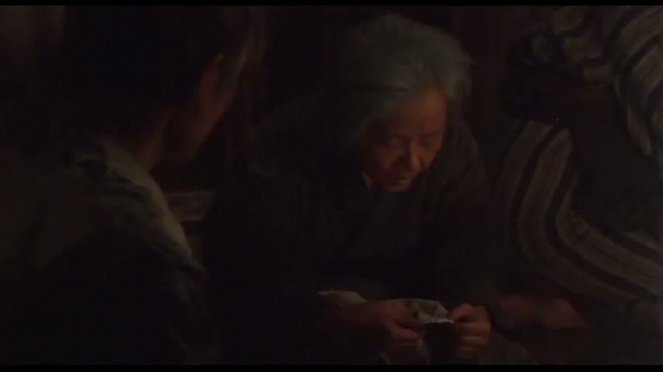Réalisation:
Shôhei ImamuraScénario:
Shôhei ImamuraPhotographie:
Shigeru KomatsubaraMusique:
池辺晋一郎Acteurs·trices:
Ken Ogata, Sumiko Sakamoto, Nenji Kobayashi, Norihei Miki, 倍賞美津子, Ben Hiura, Shôichi Ozawa, 清川虹子VOD (1)
Résumés(1)
Orin, une vieille femme des montagnes du Shinshu, atteint l'âge fatidique de soixante-dix ans. Comme le veut la coutume, elle doit se rendre sur le sommet de Narayama pour être emportée par la mort. La sagesse de la vieille femme aura d'ici-là l'occasion de se manifester. (La Rabbia)
Vidéo (1)
Critiques (2)
Another beautiful example of Japanese filmmaking abilities, when an incredibly powerful drama is created from a completely ordinary story, preceded by a demonstration of how it is possible to live in a place where most people will never reach. Man is an incredible creature, and above all, his psyche is peculiar. The film "Ballad of Narayama" demonstrates this with excellent bizarreity.
()
Ballad of Narayama should be watched by every enthusiastic admirer of a natural lifestyle. These people are often urban intellectuals, who dream of living in the countryside and despise technology and advanced civilization, which they believe prevents them from merging with the natural course of life, even though they wouldn't survive more than a few hours in the wilderness, have never worked manually, gone hungry or made any sacrifices. That is because this film is truly about people who had to do without modern technologies, who lived amid wild nature and in harmony with its laws. Ballad of Narayama does not moralize and does not have the kitschy European view of natives, like May Day celebrations or romantic or environmentally oriented literature. It simply captures the cycle of life, which revolves around reproduction, providing food and warmth, and eventually around death. The director portrays his characters essentially as one animal species, doing the same things as the surrounding animals, which he captures in beautiful images, performing sexual games, devouring each other, and succumbing to merciless competition. For example, the villagers' attitude toward children may be incomprehensible and unacceptable to the current European mentality; throwing a dead child in a neighbor's field may seem like the epitome of cynicism. However, when we think about the enormous famines in East Asia, the average life expectancy, and the high child mortality rate, death was simply a common part of life and was often observed live, and children, just like aging family members, were viewed with pragmatism, based on how useful they could be for the survival of others. The film has beautiful camera work, excellent editing, and a great atmosphere, all while showcasing the most beautiful aspects of Japanese nature. It is also quite unique because it maps the lives of those that cinema usually overlooks in the overwhelming majority. Films from ancient history are usually about members of the social elite, famous warriors, statesmen, or possibly scholars. The film has a balladic form, and a longer duration is not a detriment in this case, because where a typical genre film needs a few dynamic effects to capture the viewer's attention, here, the director instead aims to capture a different way of life, a different hierarchy of values, and a different form of civilization. Overall impression: 95%.
()
Photos (48)
Photo © Toei Company



Annonces